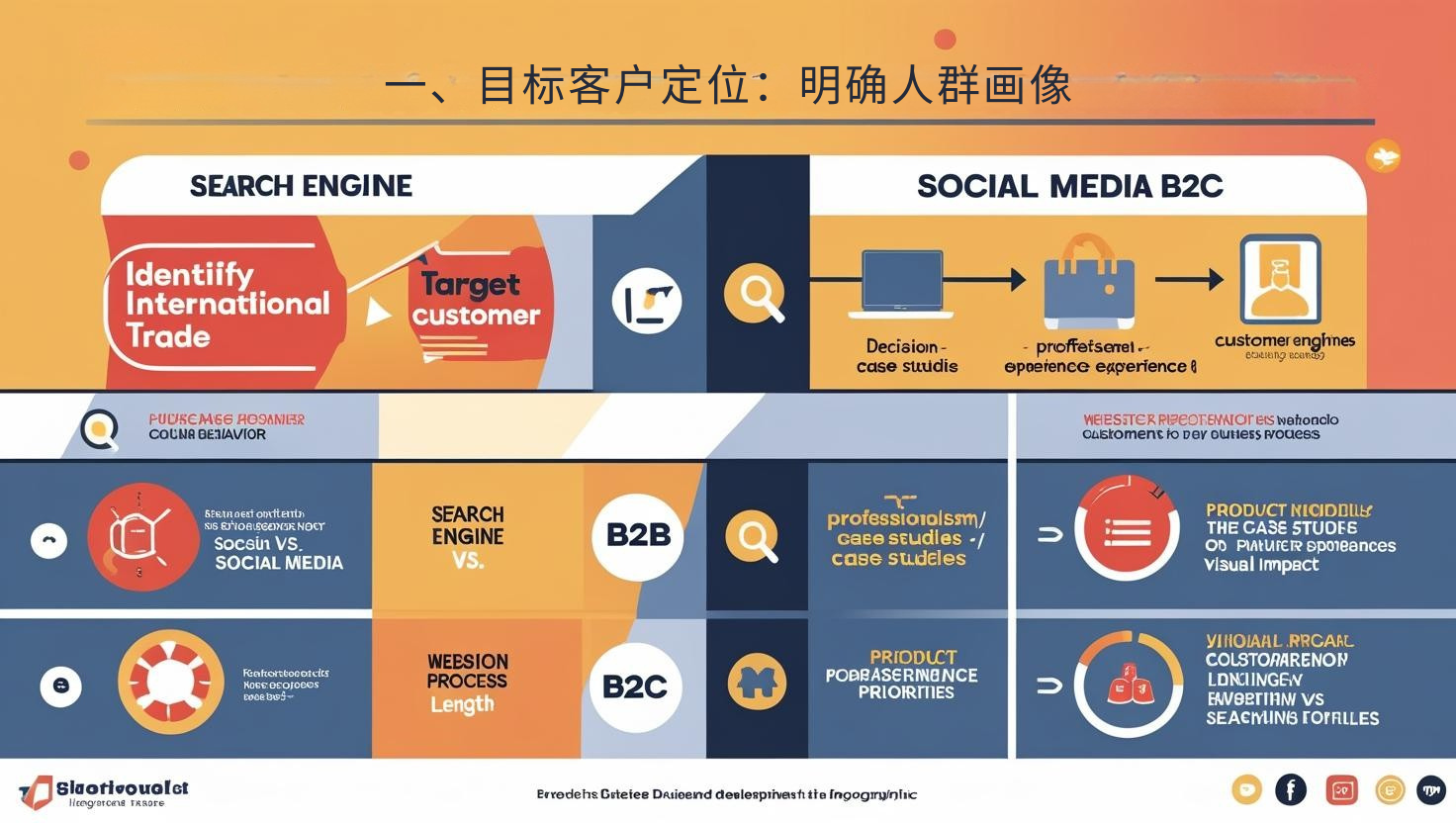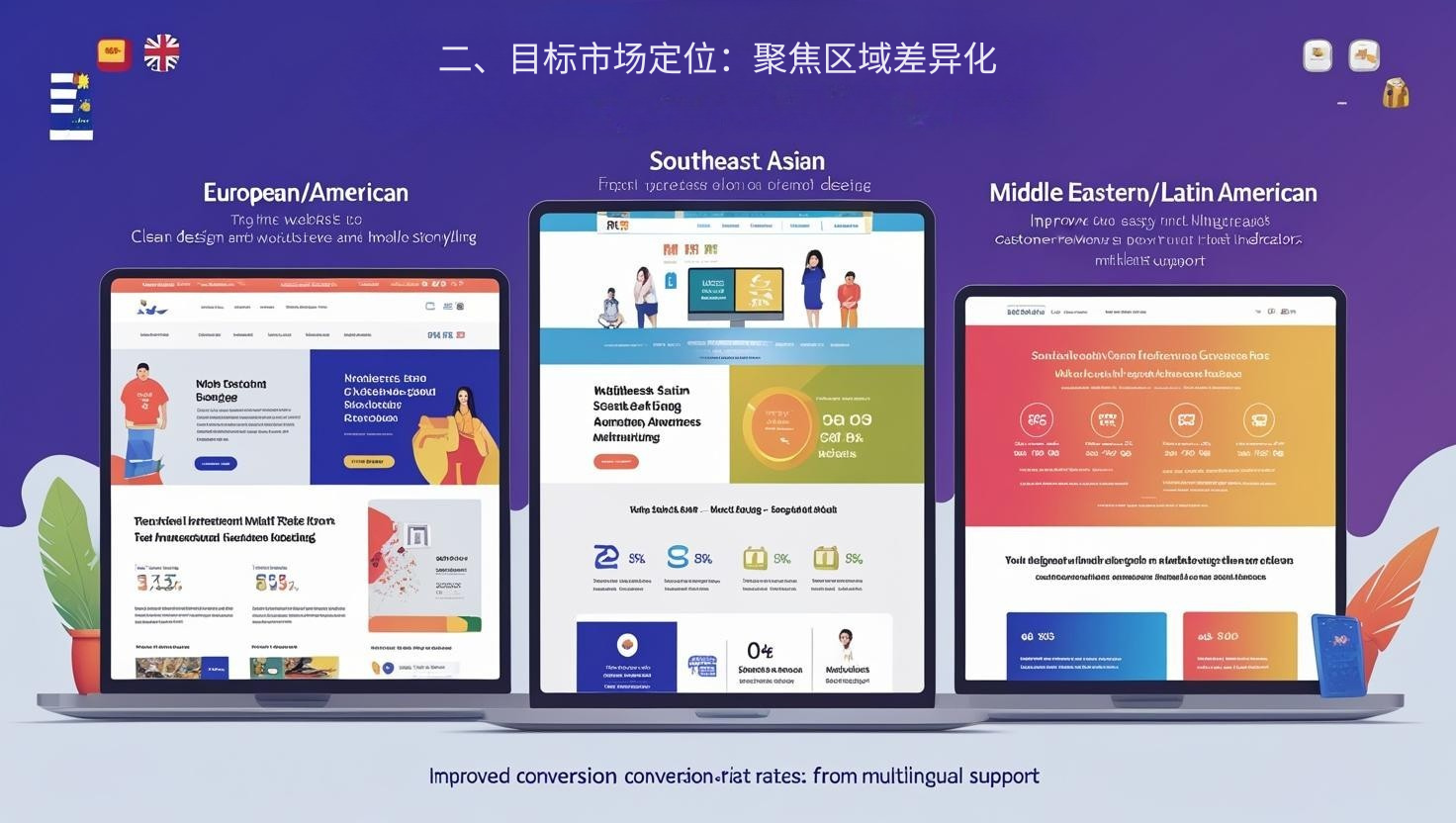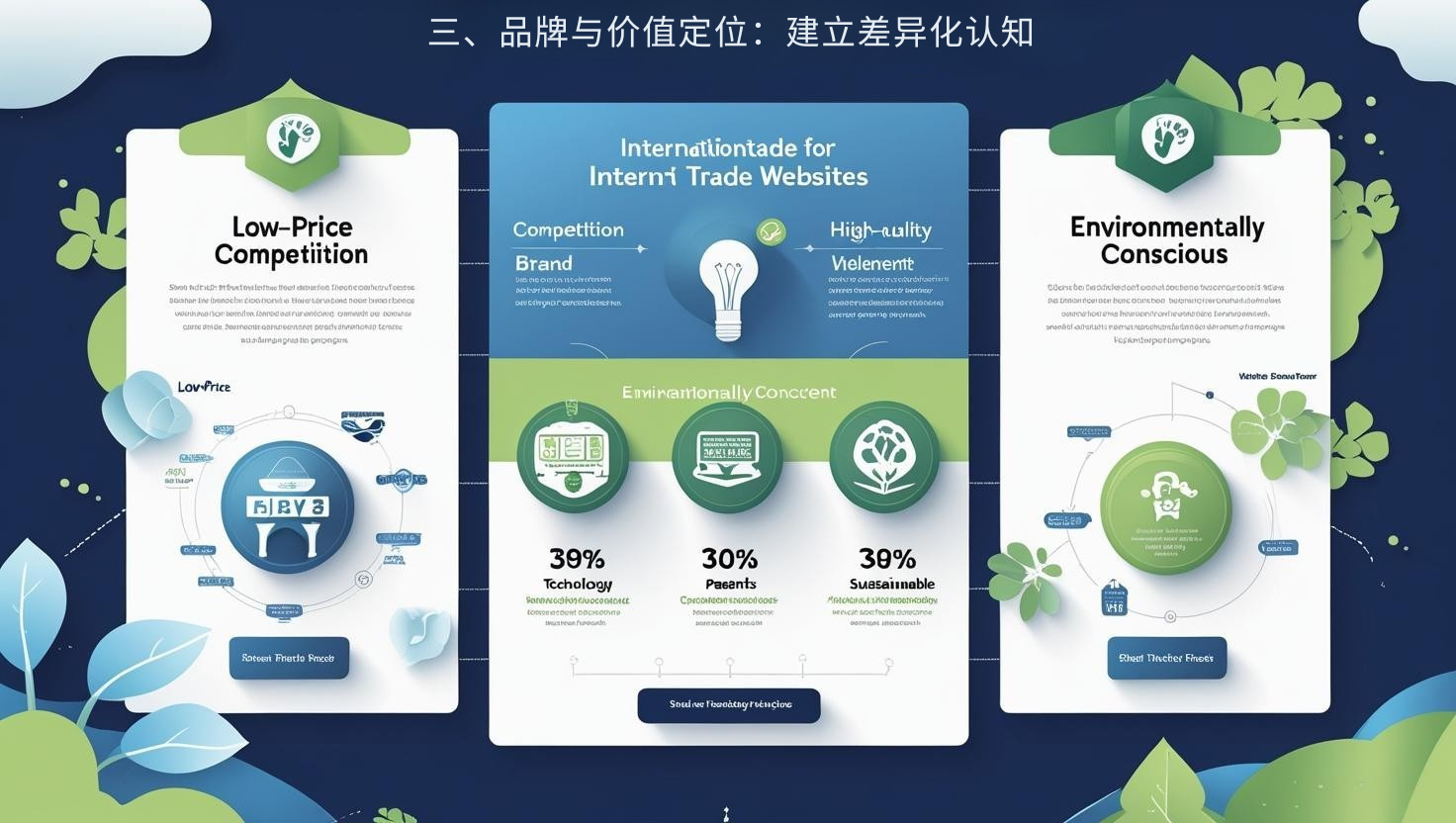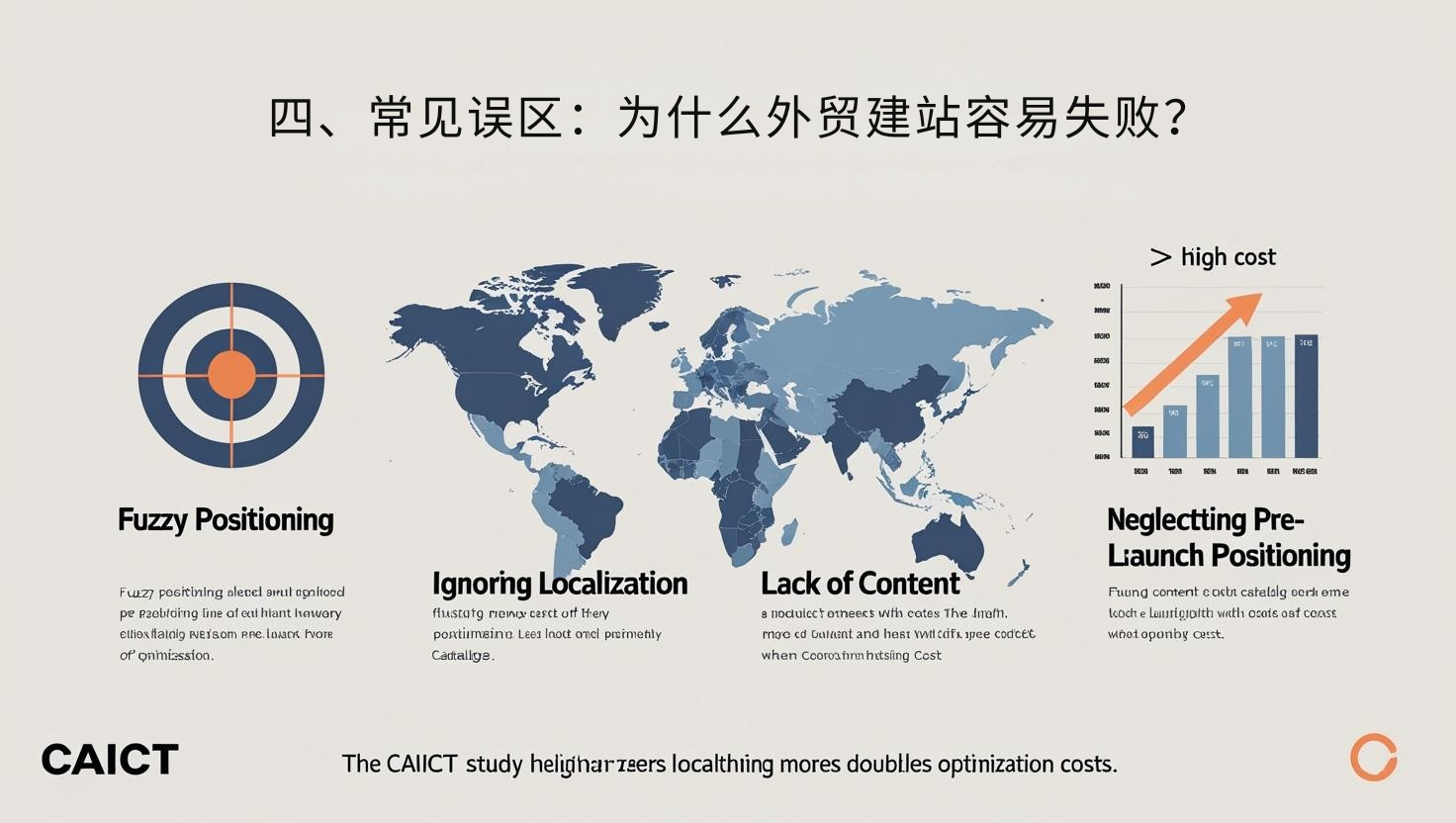1. Target customer positioning: clarify the crowd portrait
Before building a website for foreign trade, you must first answer: Who is your website for?
Is it a B2B bulk purchaser or a B2C end consumer?
Do you focus on price sensitivity, or do you value quality and brand more?
How long is the procurement decision chain?
Statista research shows that over 68% of global B2B buyers use search engines to find suppliers, while B2C buyers are more likely to seek out suppliers through social media and short videos. This means that different customer groups determine the core logic of foreign trade website development: B2B websites need to highlight professionalism and case studies, while B2C websites should enhance product experience and visual impact.
Recommendation : Draw a detailed customer portrait before building the website, and convert it into the core basis for the website columns, content and visual style.
2. Target market positioning: Focus on regional differentiation
User behavior, search habits and cultural differences in different markets will directly affect the design and operation of foreign trade websites.
European and American markets : Users focus on brand and experience, so websites need to highlight visual design and brand story.
Southeast Asian market : focuses more on mobile experience, and the page needs to be concise and load quickly.
Middle East and Latin American markets : Trust is key, and customer reviews and certification displays must be strengthened.
Research by the World Trade Organization (WTO) shows that multilingual and localized support can increase cross-border website transaction rates by over 30%. This suggests that before building a website for international trade, it's crucial to clearly identify your target market and tailor language versions, payment methods, and content strategies accordingly.
Recommendation : Don’t try to “catch everything at once”, but focus on the core market first and then expand gradually.
3. Brand and Value Positioning: Establishing Differentiated Perception
Even in the same industry, there are still significant differences in competition between companies. When building a website for foreign trade, you must clearly define your brand positioning and value proposition:
Low price competition? Or high quality?
Does it emphasize values such as environmental protection and sustainable development?
What technologies or patents are your differentiating advantages?
Google Search Central mentions that the uniqueness and relevance of website content are crucial factors in improving organic rankings. Only with a clear brand positioning can a website's content and SEO strategy be aligned, avoiding the traffic trap of "homogeneous competition."
Recommendation : Strengthen your brand proposition on the website homepage and product pages so that users can perceive the differentiation at a glance.
4. Common misunderstandings: Why is it easy for foreign trade website building to fail?
Ambiguous positioning : The website design covers all aspects but has no appeal to the target customers.
Ignoring localization : Only producing English versions fails to cover customers in multiple markets.
Lack of content accumulation : only the product catalog is displayed, lacking industry information and case support.
Research from the China Academy of Information and Communications Technology (CAICT) indicates that if foreign trade companies fail to properly position their market before building a website, subsequent optimization costs will more than double. This is why many companies have been building websites for years but still have no significant traffic or conversions.
Recommended related articles: Foreign trade customer acquisition software + independent website: traffic conversion golden combination
5. Implementation suggestions for foreign trade website construction
Customer-oriented : Design the page structure based on the pain points of target customers.
Market focus : Choose a market to break into and then expand through multiple languages and channels.
Brand differentiation : Use data, cases and value propositions to create competitive barriers.
These steps can help business owners and foreign trade decision makers clarify the direction before building a website and avoid subsequent high-cost rework.
Building a website for international trade isn't just a technical issue; it's a strategic one. Clarifying customer positioning, market positioning, and brand positioning is crucial to ensuring a website truly becomes a global customer acquisition engine. Combining research from Statista , the WTO , Google , and CAICT , we can clearly see that precise positioning is the key to success or failure in building a website for international trade.
👉 If you're looking to quickly build a website for international trade that supports SEO optimization, multilingual support, automatic content updates, and intelligent customer service , we recommend trying Pinshop . It can help business owners and international trade decision-makers avoid unnecessary complications and turn their websites into true customer acquisition engines.











